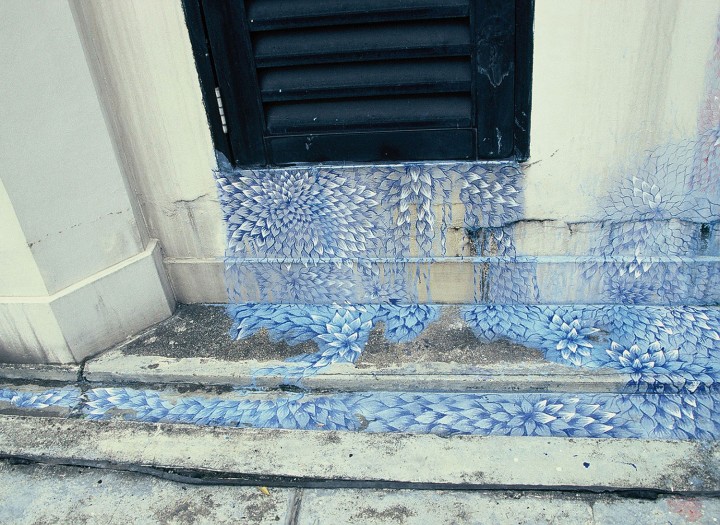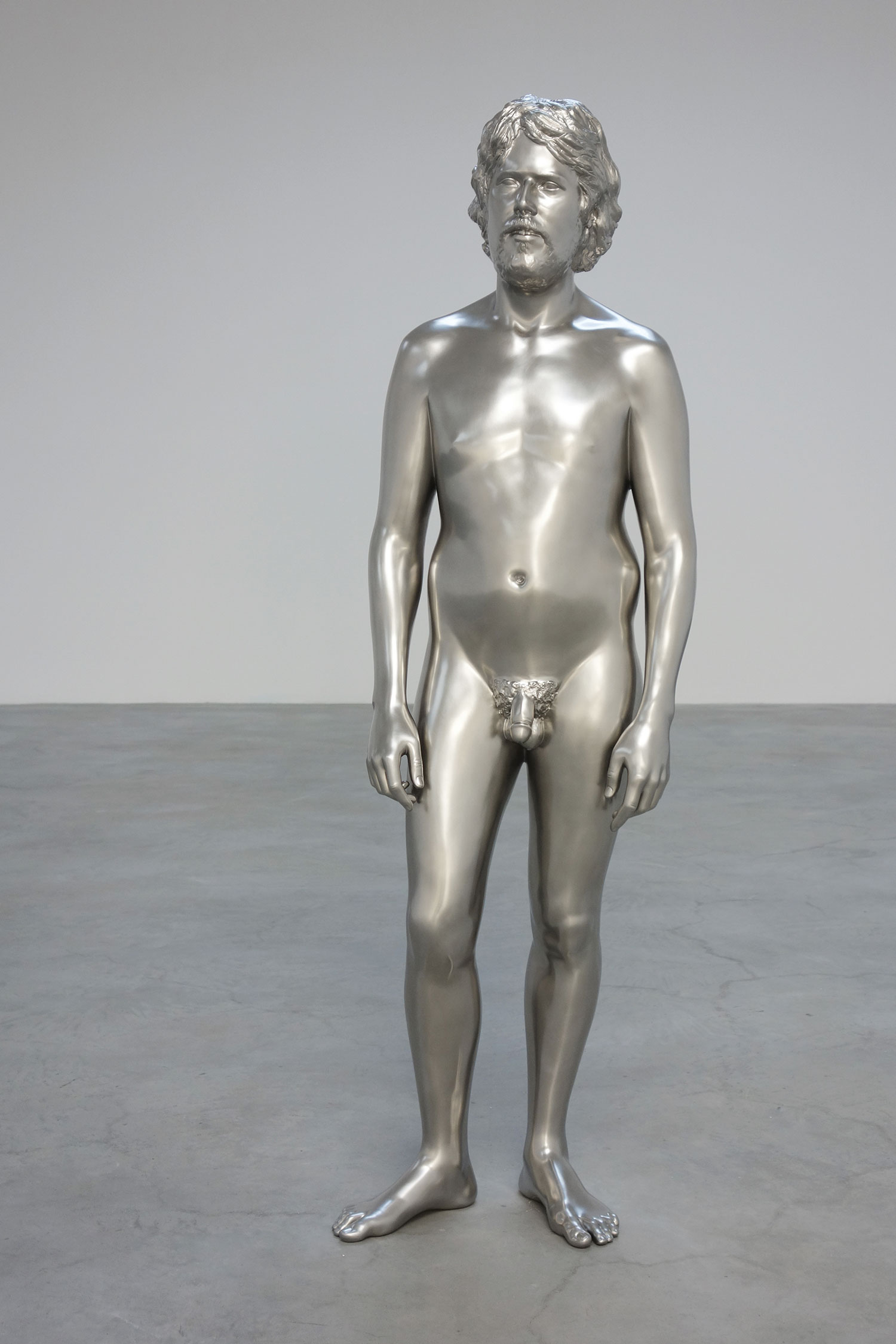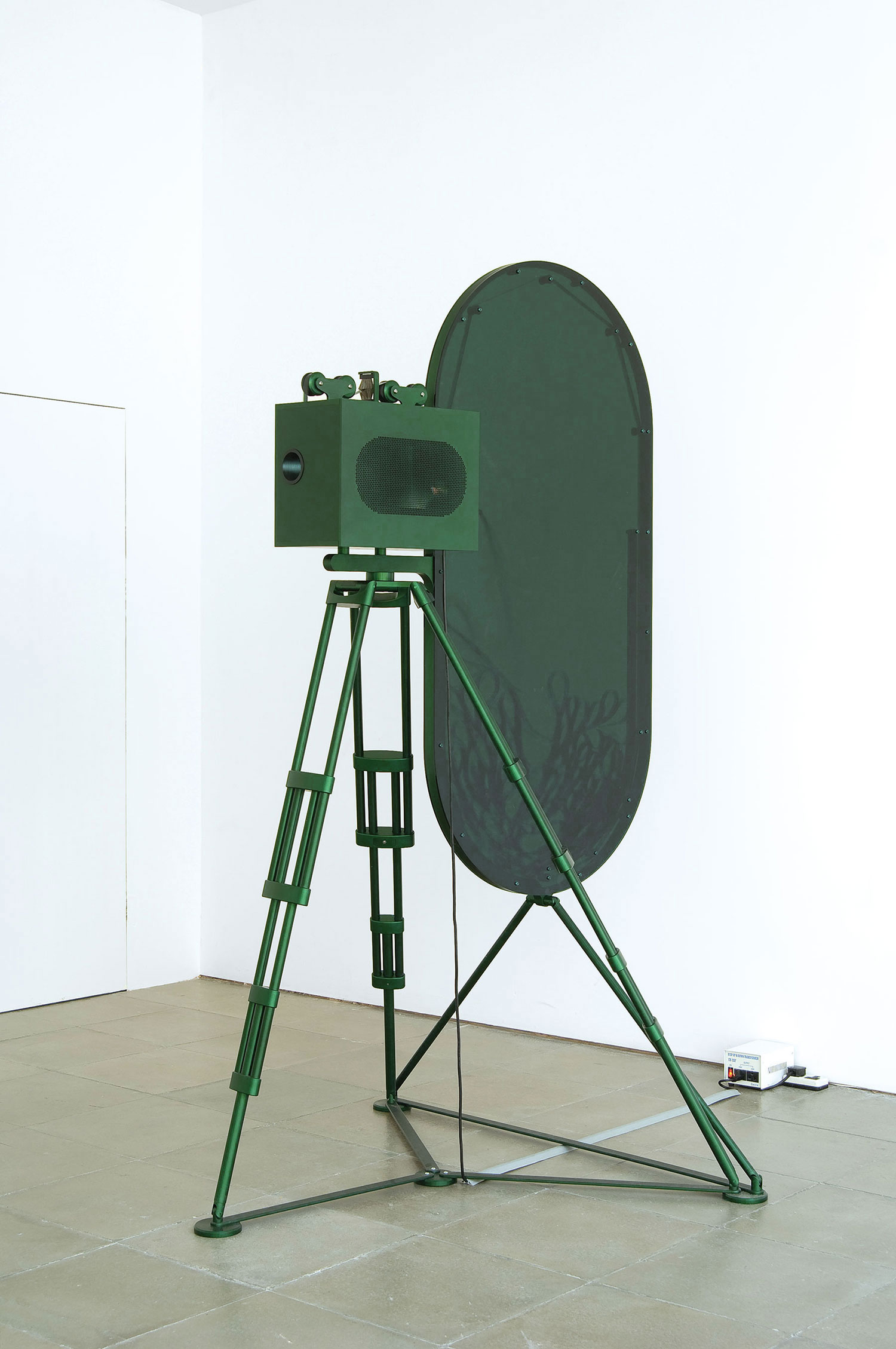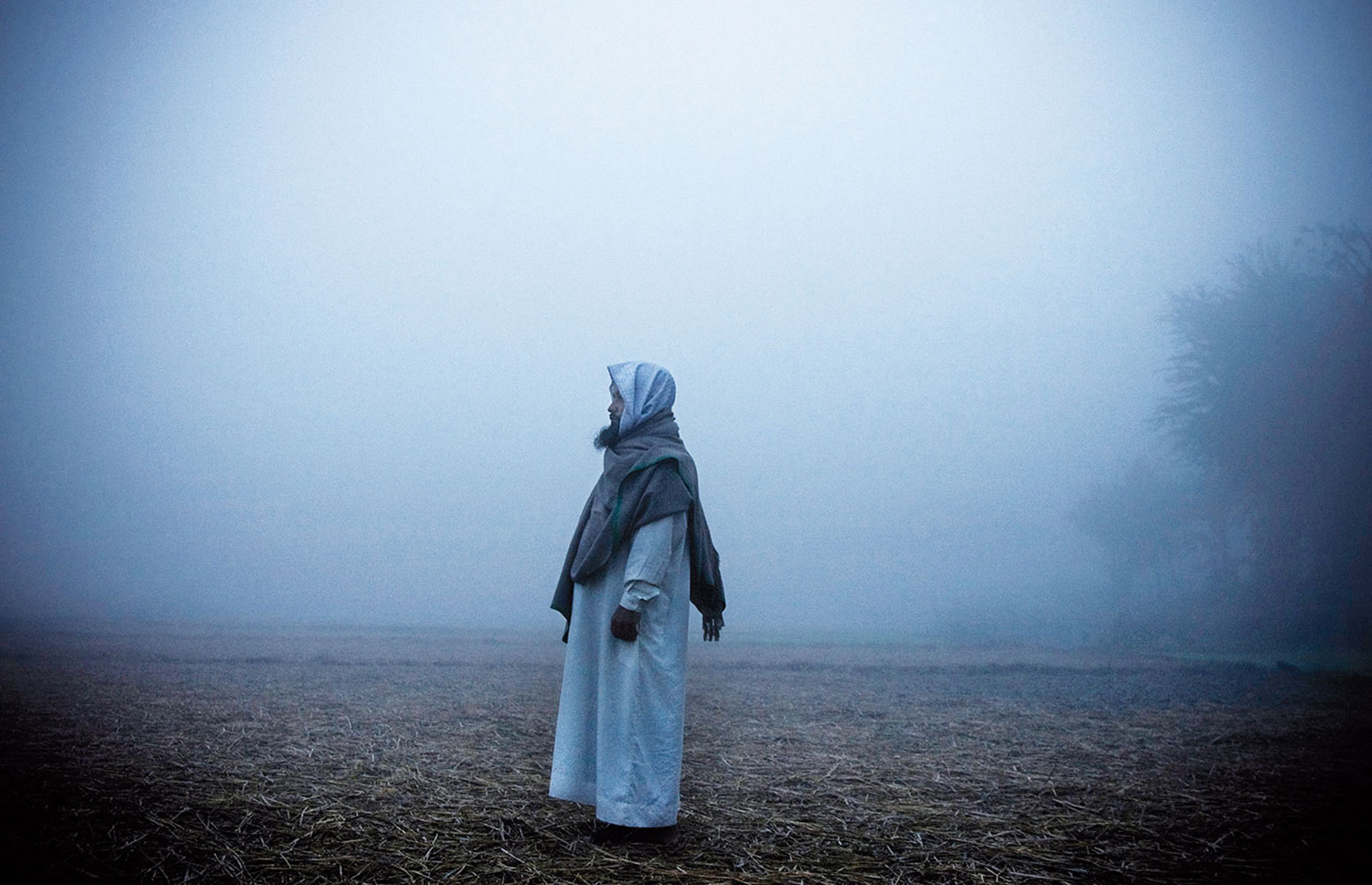
Lucy Rees: How did you first become interested in miniature painting? Tell me about your training.
Imran Qureshi: When I first came to the National College of Arts in Lahore, I actually didn’t know anything about miniature painting. I had read a few newspaper articles and knew a bit about the historical miniature painting but nothing about the contemporary version. I first came to the NCA in 1990. During the foundation year, fine art, design and architecture students all work together in the same department; then in the second year you have to do all four courses offered (miniature painting, painting, sculpture and printmaking). At the end of the year you choose one subject to specialize in, so I took painting. I actually wanted to do printmaking, but my teacher, Bashir Ahmed, was an important traditional miniature painter and had learned from the old master court painters. He was always asking me to take it up because I was good at it. He was so adamant that at one point I stopped passing through the miniature painting area to get to my studio. I then realized that he had so much faith in me that perhaps miniature painting was something I should take seriously and I started to think about it.
LR: And you still teach at the National College of Arts in Lahore?
IQ: Yes, it keeps me in the loop. I never forget the traditional techniques because I am teaching them.
LR:Could you define the genre of “Contemporary Miniature”? How do you break the boundaries of the traditional form?
IQ: When I made the decision to first take up miniature painting I thought there is no point simply making reproductions of the old historical miniature paintings from the subcontinent. I wanted to take it as a challenge, and doing something new was very important to me. In my third year as a student I was restricted to making a lot of reproductions, and then later on I started breaking these boundaries.
LR: So you had to learn the fundamentals perfectly before challenging them?
IQ: Yes, exactly, I needed to master the techniques. And then I began to do a lot of experimentation. I was trying to find the answer to what contemporary miniature painting was all about. Firstly I was painting traditional images and really getting to know them, before then finding contemporary ways of substituting the traditional sensibilities. I used airbrush, photocopy transfers. I experimented with tea stains and using marbling. For my thesis project, “The Dream” in 1993, I was constructing the surfaces and making varied levels by cutting and pasting the wasli paper then painting it. I was exploring ways to get a built-up effect without using gold leaf. I then started looking at painting modern and contemporary imagery by looking at the different figures around me. I pondered the idea that maybe it didn’t actually need to be about the narrative of miniature painting, but more to do with a certain sensibility or aesthetic.
LR: Congratulations on recently receiving the Deutsche Bank 2013 Artist of the Year award. What was the selection process like?
IQ: Thank you. I actually had no idea. One day I got an email from Nancy Spector, Deputy Director and Chief Curator of the Guggenheim, telling me that I had been selected to be the Deutsche Bank’s “Artist of the Year” for 2013 by a jury comprising Okwui Enwezor, Hou Hanru, Udo Kittelman and herself. She informed me that I was to make an exhibition in Berlin in 2013. Then I looked up the details of the award. I was very surprised and honored. The hardest part was not telling anyone the news for months; I was told in January and it has just been announced in November 2012.
LR: Do you feel that there was a period when you had a breakthrough in your practice, a decisive moment?
IQ: I think after doing a lot of experimentation I just stopped thinking about what it all meant and just started to do my work. I’m not sure that there was an exact moment; it just happened. Whatever I was making had a strong connection with miniature painting anyway, and even my very different site-specific projects, like Blessings Upon the Land of My Love (2011), for the 2011 Sharjah Biennal, are connected to the traditional techniques.
LR: How important is preserving this Islamic tradition?
IQ: Well, I wouldn’t say it’s about preservation. I mean, I’m not a conservationist; I’m an artist so it’s not something I need to worry about. The tradition is still very alive, it changes with time, and so does my work.
LR: Violence, terrorist attacks and turbulent politics in Pakistan are frequently projected by the media. What is your experience living there? What does it mean to be an artist in Pakistan today?
IQ: Living in Pakistan is wonderful. I could never live anywhere else, honestly. I am very comfortable here in my country. The environment is very challenging of course, but the contemporary artists are really bold. They are talking about really core issues; I don’t think they are having any problems. Of course there are censorship issues and restrictions as there are even in the West, where paintings are stripped off the wall for sensitivity reasons. That happens here too. If the artist is intelligent, though, they can find their way of saying what they want. Pakistani contemporary art really moves you.
LR: Do you use this violent context as your inspiration for artistic creation? Would you say you are defined by it?
IQ: I have always been interested in my surroundings — in the social-political context. It’s always been there. With time the nature of the issues has changed. I think it’s inherently within me though. When I was a child the first thing I did every morning before school when I got about of bed was read the newspaper, and I still read the current affairs every day. Things were going on like Russian interference in Afghanistan, and the Geneva conference. As a ten year old I did not have a full understanding of the events, but I had my own perception of things. Speaking about my work, that’s why there is a lot of violence present. But these issues are not only in Pakistan; they are everywhere. My art varies from very personal narratives to world politics.
LR: I see that you often explore these serious issues with paradoxically beautiful and playful materials and techniques.
IQ: I feel that humor is very important, and I use it a lot — if you don’t have a sense of humor it makes it hard to survive in these conditions. For example, I play with humor in the work How to cut an artillery pantaloon (2001) where the military pantaloon has more pockets than the civilian one, and in the series “Moderate Enlightenment” (2006-2009). Humor can make things more impactful. After all, art is not a newspaper headline.
LR: It is hard not to be stunned by your technical virtuosity and intricate detail. The works imply a slow and reflective process. Could you tell us about the preparation? How long does a painting take?
IQ: The works on paper take about five to fifteen days, whereas the site-specific works take me about fifteen to twenty-five days. The installation They Shimmer Still (2012) that was commissioned for the last Sydney Biennale on Cockatoo Island took twenty days, for example.
LR: Do you consider yourself part of a movement or group? How do you feel you connect with other artists of your generation?
IQ: I think it happened very naturally. But it was other people, like art writers and historians, who started considering me in a group and labeling me as a leading figure in the contemporary art world. To be honest, I sometimes felt slightly embarrassed because of the interest in my work and how they gave a lot of importance to me. I’m quite shy in that way.
LR: Has the boom in the Indian economy and art market changed things for you? Do you feel more part of the international art world?
IQ: I don’t think the boom has affected Pakistan; India and Pakistan are still very much apart. But the whole global art phenomenon is affecting us. Young artists upon graduation, for example, immediately start looking for international shows, and when I was a student I never would have thought to show abroad — we were making works for our own.
LR: What about now? Do you make works with a specific audience in mind?
IQ: No, I don’t think about that.
LR: What are you currently working on?
IQ: I was just doing some paintings for the Deutsche Bank calendar and some special-edition works. I am going to Berlin in January where I will start my work for the show at the Deutsche Bank KunstHalle, and will be making large-scale canvases. I’ll have a studio there so I’ll be there for months. The show opens in April, when I’ll be showing a new series of miniatures along with another body of very recent work especially created for this show. I will be showing the three sides of my art practice: traditional, abstract, and site-specific. I want to give a clear idea of my work as a whole.





